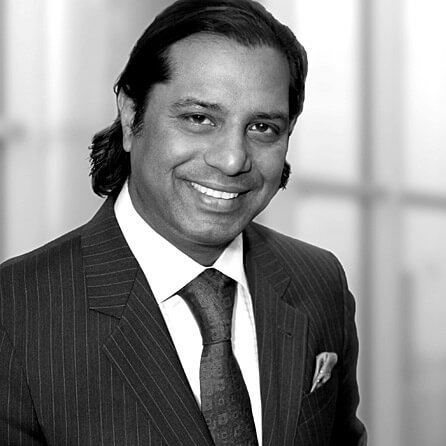Reflections and the Journey of a Modern Face Lifting Surgeon
“There is no new gyse that is nas old…” Geofferey Chaucer 1343-1400
Face lifting is viewed as one of the most powerful elective surgical procedures for facial rejuvenation.
As a surgeon, it is one of the most gratifying procedures that I am privileged to perform.
Prior to devoting my practice to Aesthetic Surgery, I performed complex craniofacial surgery as a result of trauma and cancer. Based on my reconstructive work, I was appointed to the International faculty of the AOCMF and frequently taught at their courses and workshops. Additionally, I performed microsurgical head/neck reconstructions.
The surgical technique of face lifting has evolved even over the last 15-years. During my training, although there was much discussion on the SMAS and sub-SMAS techniques, skin only face lifting continued to persist. The deep plane facelift, popularized by Hamra since 1990 but first described by Skoog, received much attention but was viewed as perhaps being too invasive. Hamra’s facelift technique involved elevating the lower eyelid muscle. Most face lifting techniques in the early 2000s addressed the SMAS by folding (plication) techniques and closure under tension of the skin flaps.
During my Plastic & Reconstructive Fellowship, I was trained to perform face lifting with skin only techniques, SMAS plication, and variations of deep plane lifts. Early in my private plastic surgery practice, I traveled to Ghent, Belgium to observe and learn the MACS face lifting technique as well as micro and nano fat grafting techniques from Drs. Tonnard and Verpeale. While I used this technique successfully in my practice for several years and our patients were generally pleased with it, I was dissatisfied with central face rejuvenation. I continued exploring techniques to deliver a more powerful lift to the central and lower face. The valuable lessons from using the MACS technique included an appreciation of the purely vertical vector of the face lift as well as the short scar pretrichial (in the hair line) incision which I continue to use today.
In my quest for a more powerful lift, I revisited the techniques of Dr. Daniel Baker of NYC and briefly adopted the SMAS plication and excision techniques. However, I was not achieving what I considered the ideal vector for lift with this technique as the direction of the lift was more oblique. Although a safe and excellent technique, it did not completely fulfill my expectations for facial rejuvenation surgery. While SMAS plication techniques are efficient and safe, I remained dissatisfied with the central rejuvenation.
The quest for the improved face lifting led to me to study the work of Dr. Timothy Martin and I adopted the sub-SMAS dissection with the vertical lift and suspension from the deep temporal fascia. I first observed Dr. Martin’s techniques in Stockholm at the Beauty Through Science (BTS) meeting in 2017. I continue to use similar techniques for facial rejuvenation with the addition of facial fat grafting. Dr. Martin’s techniques reinforced the use of microfat grafting which I continue to use to this day. Presently I perform the extended deep plane facelift with the pretrichial incision and microfat grafting as necessary. The components of the extended deep plane lift that i perform are as follows:
- A short scar pretrichial (in front of the hairline) incision in order to preserve the hair line. In patients with very curly hair, I continue to use the temporal incision as I find that kinky hair does not grow through the incision as desired.
- Elevation of the mobile SMAS to the zygomaticus major muscle or approximately the nasolabial fold. This is what makes an extended deep plane dissection.
- Mobilization and repositioning of the malar fat pad either with sharp dissection of the Finger Assisted Malar Elevation (FAME) technique described by Dr. Sherrell Aston of NYC.
- Release of the zygomatic, malar, and mandibular retaining ligaments. These ligaments are connections from the facial skeleton to the skin that limit mobilization of the skin.
- Elevation and repositioning of the platysma muscle as described by Dr. Aston.
- A lifting vector that approximates a vertical direction.
- Tension free closure of the skin edges – the lift is in the deep SMAS layers.
The net result of these maneuvers is to restore midface volume while correcting the nasolabial folds and pre-jowl sulcus. Additionally, the neck is rejuvenated. I will sometimes perform deep neck dissection to rejuvenate the neck.
The extended deep plane lift is currently the work horse technique for facial rejuvenation at Reddy Aesthetics. In settling on the deep plane technique, I have evaluated and used several techniques over the past decade. Each technique imparts some incremental improvement and understanding that serves to improve the surgical outcomes in our patients. It is interesting that my quest for a better face lift technique eventually brought me back to the beginning and Dr. Hamra’s techniques.

P. Pravin Reddy, MD is a Board Certified Plastic & Reconstructive Surgeon and a member of the American Society of Plastic Surgeons.